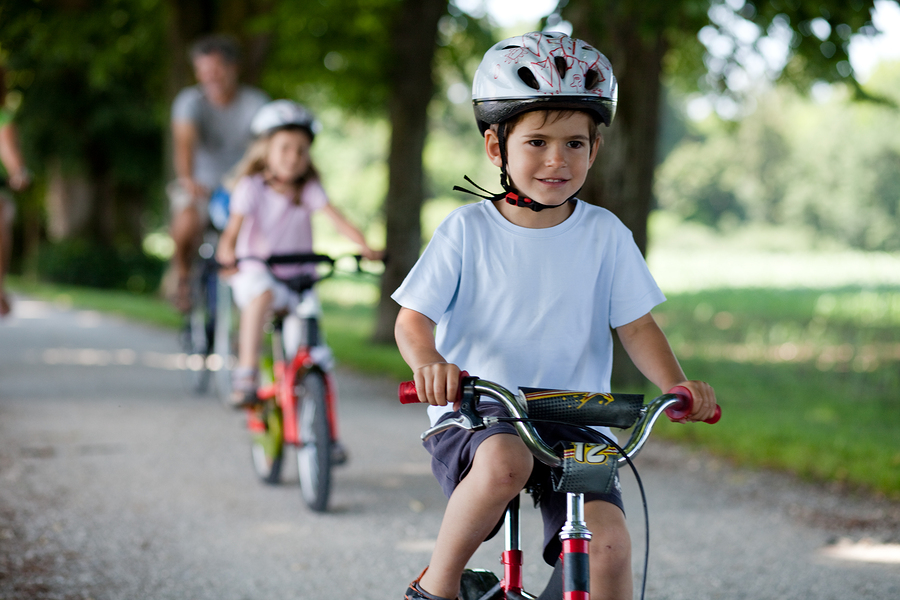-
07 May 2013
-
0 comments

How do you teach your child to ride a two-wheeler bike?
Transitioning from training wheels to a two-wheeler bike is a milestone that both you and your child will always remember. The look on a child’s face when he or she finally gets across the park, without falling, is priceless! So, how do you get your child to ride?
Two weeks ago, my husband and I taught our four and a half year old son, Shimon, how to ride a two-wheeler. He has been outside ever since! My husband might tell you that our son only learned to ride a bike because he was bribed with a lollipop to stay on the bike. However, the truth is that a child learning to ride a bike has two components. The child must have the developed skills that are required to learn to ride and he needs to be in an environment that will foster success.
Skills needed to ride a bike and tips for success:
Children can learn to ride a bike as early as three and a half years of age, although five to six years of age is more common. A child has to be able to pedal using the strength in his legs and coordinated fluid motion. In addition, the child has to have proper balance and adequate core control to maintain an upright position. Motor planning is also required for the child to figure out in which direction he or she should steer the bike and how to put all the pieces together.
Below are some tips to make teaching how to ride a bike easier. If you keep at it for a week or two, your child will be on his or her way to a fun filled summer. Kids pick things up fast; the younger a child learns the quicker it will be.
-
• A child must have proper body awareness while moving in order to successfully master bike riding. Proprioceptive activities (heavy work involving deep pressure) prior to bike riding helps alert a child to better understand his body. Some ideas of proprioceptive activities include jumping on a trampoline or on the ground, rolling on the floor, or getting a big hug. Spinning or going on a swing prior to bike riding is also helpful to alert the vestibular system, which is the system that helps with balance and understanding of movement.
-
• When the child first gets on the bike, make sure he or she puts their dominant foot on the top pedal and the non-dominant foot on the ground. You should hold onto the steering wheel and back of the seat and have the child push with his or her dominant foot onto the pedal and then place the other foot on the other pedal. Tell the child to start pedaling. Let go of the bike only when your child is secure and moving quickly enough to keep his or her balance. This may not be on the first day.
-
• It is helpful to remind a child to pedal quickly. The faster he goes the better his balance will be.
-
• Often children learn best when they are able to self-start on a bike. Use the technique mentioned above to help a child self-start.
-
• The size of the bike is important to the learning process too. A child should be able to sit on the seat and reach the ground with the tips of his or her foot (but not able to put a full foot down). You may find that learning on a small bike will be easier for your child.
-
• Learning to ride on flat grass may initially help to get over the fear of falling on pavement.
-
• Pre-bandage your child’s knees and make sure your child is wearing a pair of pants that you won’t mind if they are ruined. Learning to ride a bike often goes hand in hand with ripping a pair of pants.
-
• Always give positive encouragement; learning something new is hard. Although, you and your child may be surprised at how quickly he or she is able to catch on.
I have found that learning how to ride a bike is a tremendous confidence builder for kids. I love seeing that huge smile while they scream “I CAN DO IT!”
Teaching your child how to ride a two-wheeler bike may be the best gift you can give your child for the summer (and yourself too!). Kids can spend hours playing on their bikes. Not only do you get a break from entertaining but it is also a healthy outlet for your child.
Please keep in mind that it is always important to closely supervise a child, even when in an empty parking lot, and to insist that he or she always wears a helmet.
-Malka Schnitzer, owner and director of The Therapy Spot
Share Social
